
The Punta della Dogana (Customs House) with Santa Maria della Salute in the background. Architect:Giusepe Benoni. Built: 1667-82. Bernardo Facone executed the statue of Fortune, which stands atop the golden ball. [Click on images to enlarge them.]
The charming architectural promontory of the Dogana stretches out the most graceful of arms, balancing in its hand the gilded globe on which revolves the delightful satirical figure of a little weathercock of a woman. This Fortune, this Navigation, or whatever she is called—she surely needs no name—catches the wind in the bit of drapery of which she has divested her rotary bronze loveliness. On the other side of the Canal twinkles and glitters the long row of the happy palaces which are mainly expensive hotels. There is a little of everything everywhere, in the bright Venetian air, but to these houses belongs especially the appearance of sitting, across the water, at the receipt of custom, of watching in their hypocritical loveliness for the stranger and the victim. — Henry James, Italian Hours
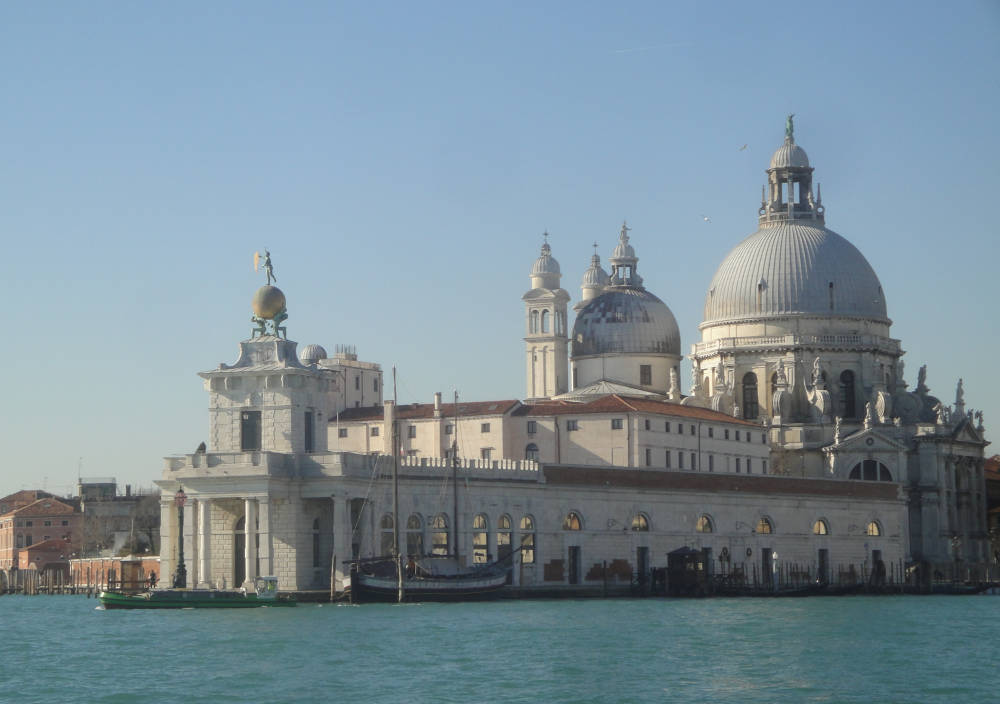
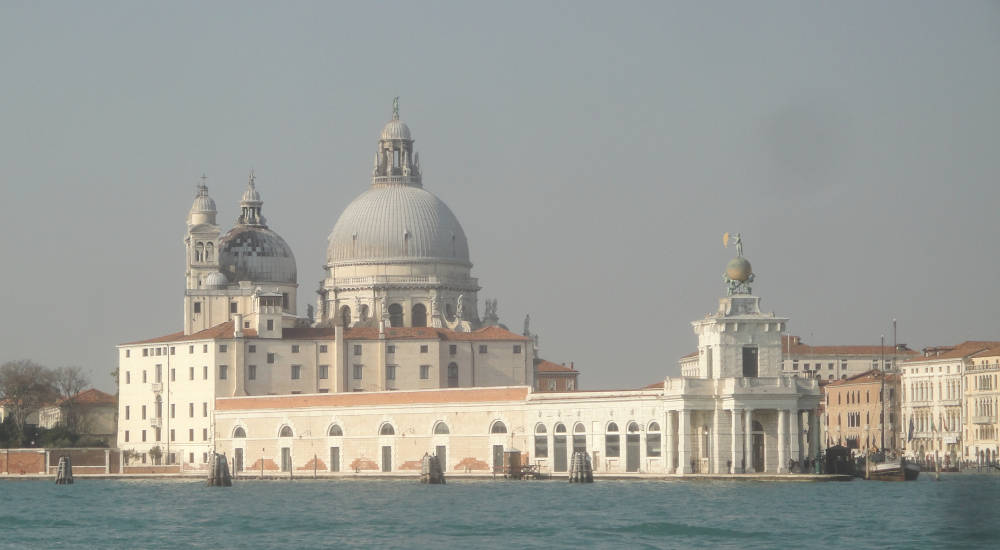
Left: The Custom’s House viewed from a boat leaving the Grand Canal. Right: Viewed from the same boat after it passed it.
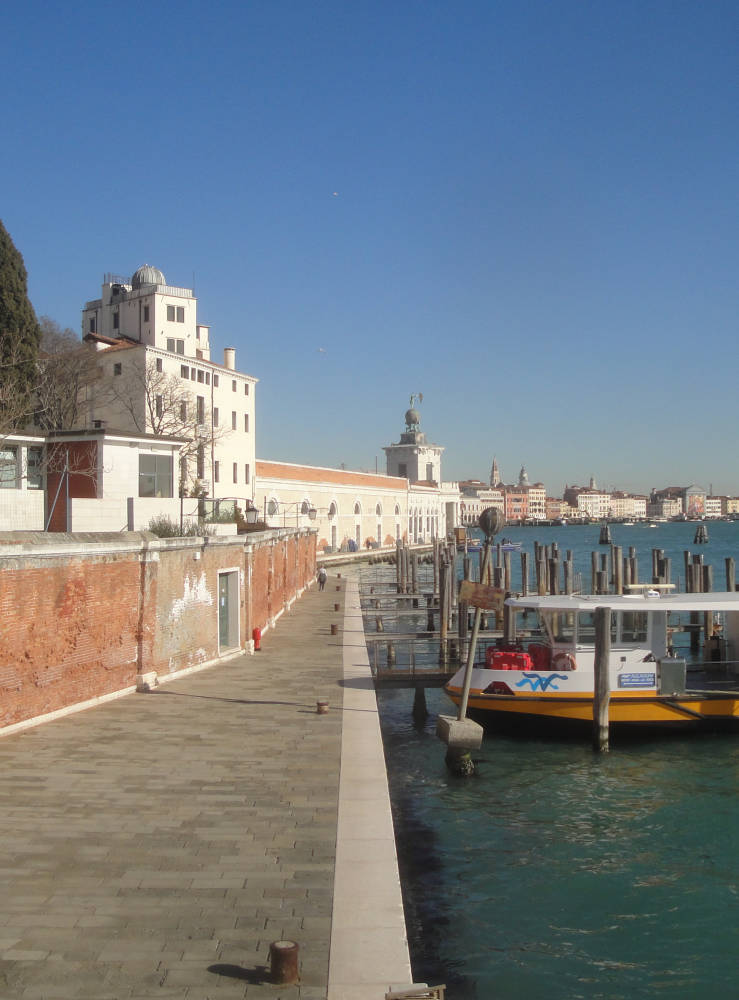

Left: On the quai looking in the direction of the Rialto. Right: Approaching the Dogana.
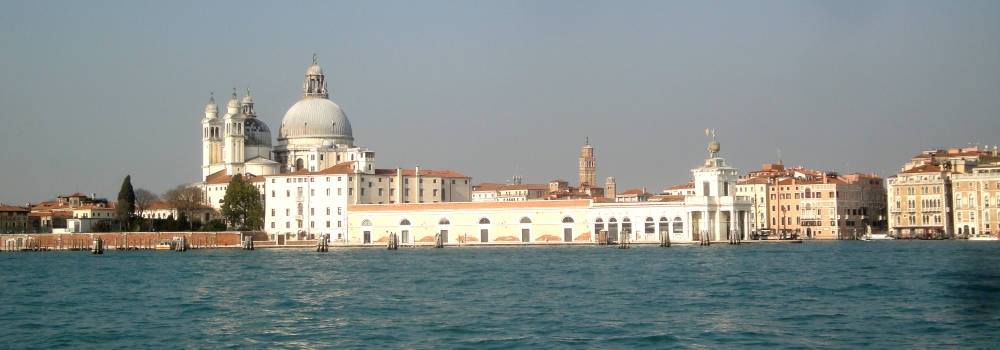
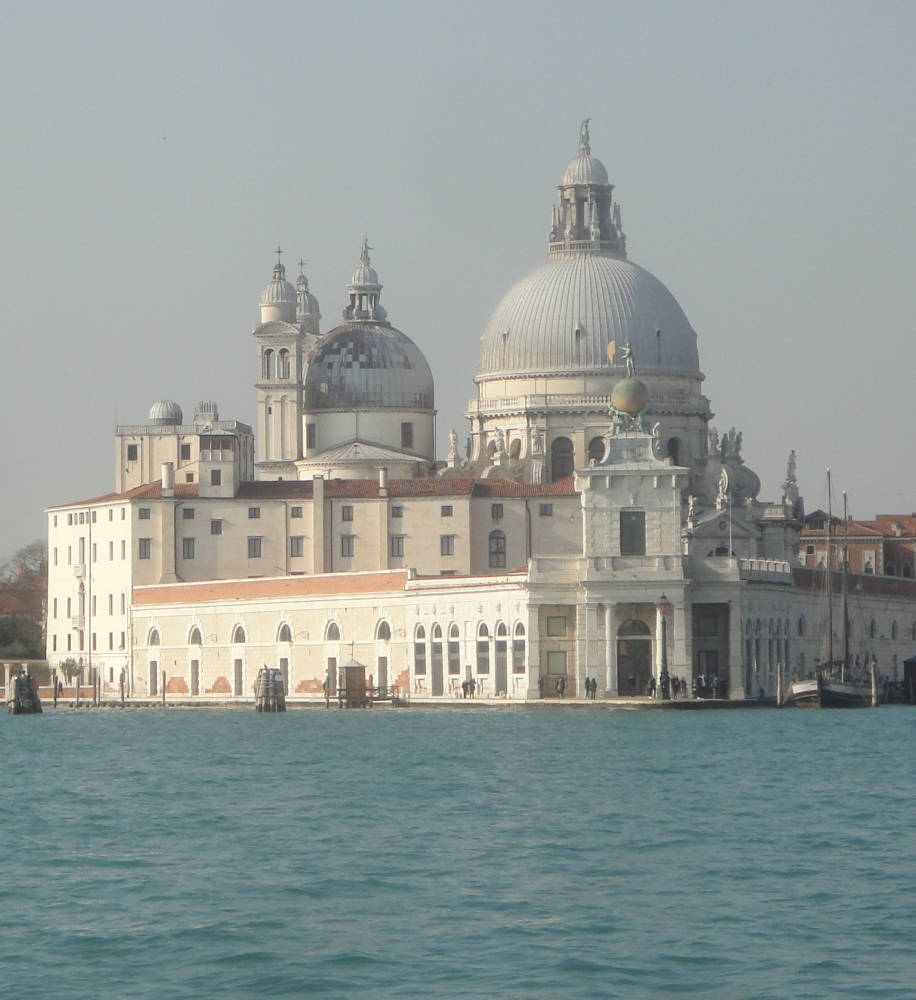
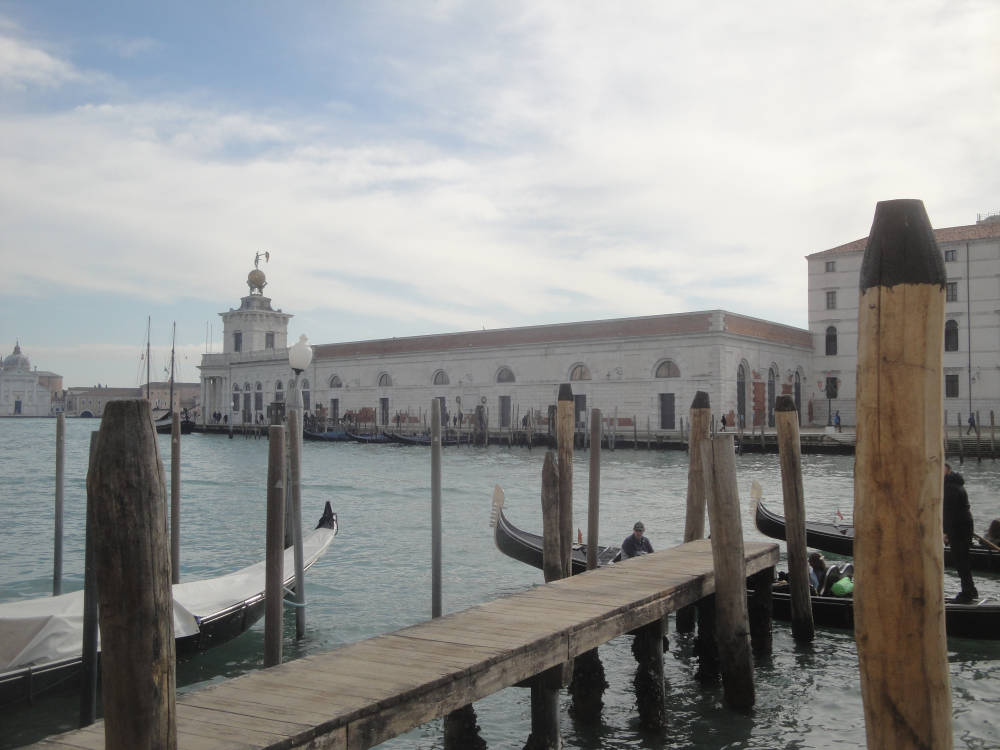
Left: A view directly toward the main entrance. Right: The Customs House viewed from the opposite side of the canal.
Formatting, Perspective Correction, and photograph at top by Landow October 2000. All others by Freidus 2020. You may use these images without prior permission for any scholarly or educational purpose as long as you (1) credit the photographer and (2) link your document to this URL in a web document or cite the Victorian Web in a print one.
Bibliography
James, Henry. Italian Hours. Etext prepared by Richard Farris (rf7211@hotmail.com) and proofread by the online team at Distributed Proofreaders. Web. 12 April 2012.
�
Last modified 26 March 2020